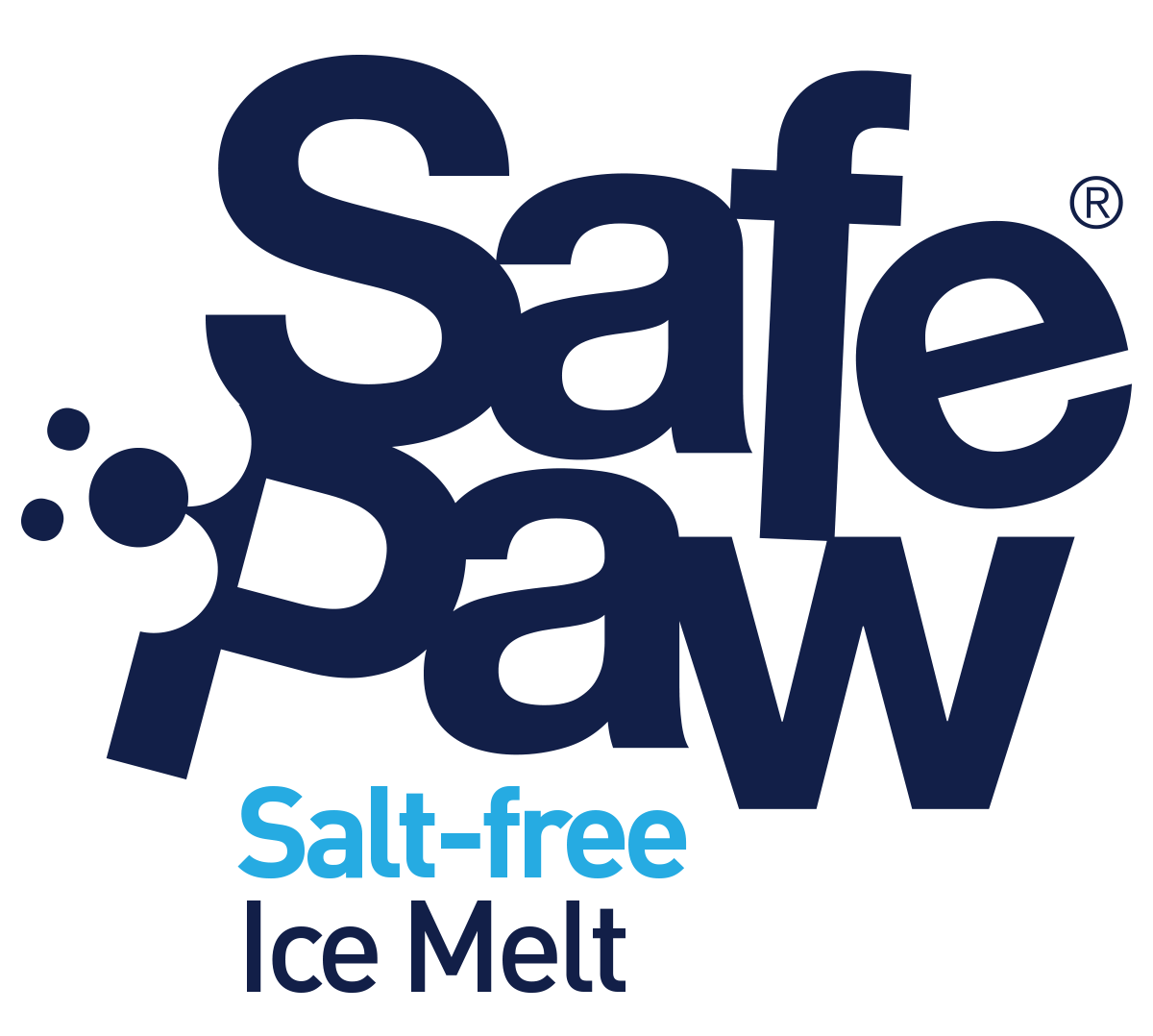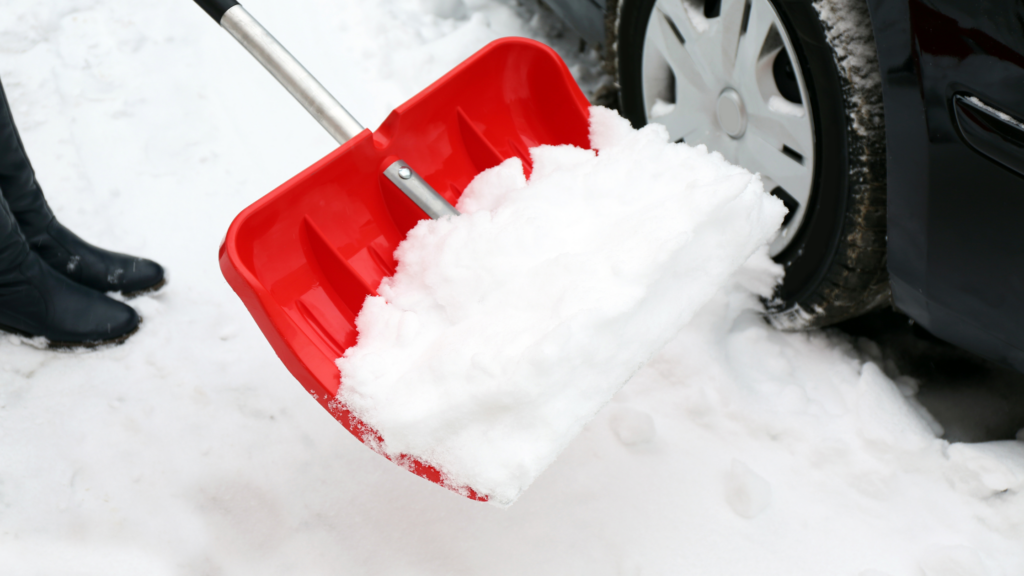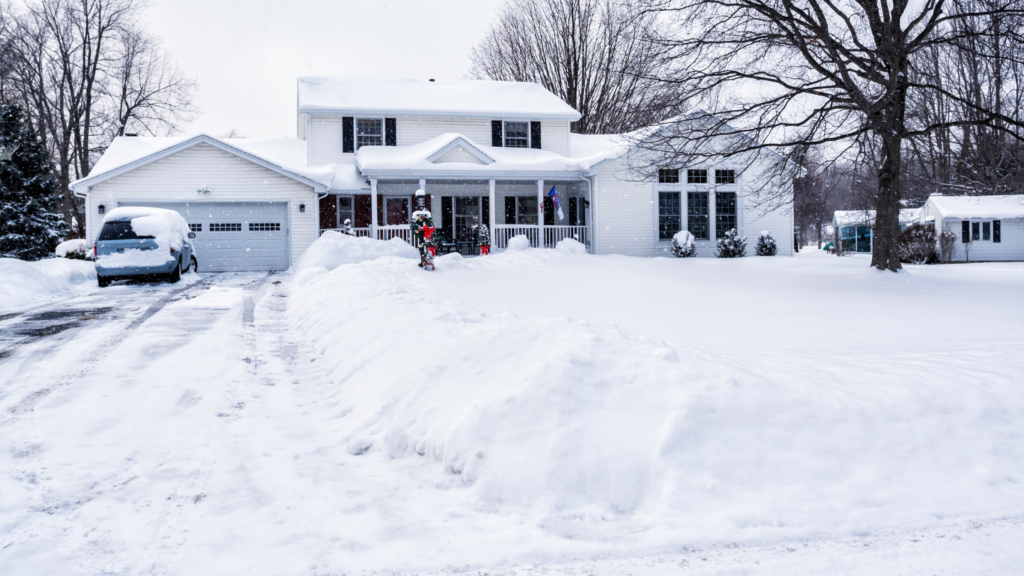Winter can be tough on concrete surfaces. While ice and snow are inevitable in cold climates, using the wrong deicer can cause significant damage to your driveways, sidewalks, and other concrete surfaces. Selecting the right deicer for concrete is critical to keeping your property safe and intact during the winter months. Here’s how to make the best choice and prevent damage while effectively managing ice.
Table of Contents
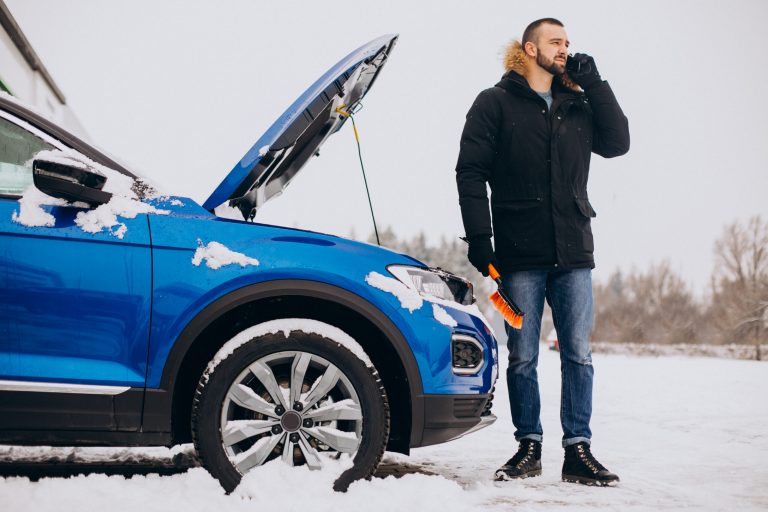
Understanding the Impact of Deicers on Concrete Surfaces
Concrete is a porous material, making it vulnerable to damage from deicing chlorides. Traditional salts, such as sodium chloride and calcium chloride, penetrate the surface of the concrete. Safe salt for concrete is a misnomer. Salt contains chlorides that exacerbate the freeze-thaw cycle. Water seeps into the pores of the concrete, freezes, and expands, causing cracking, spalling, and surface degradation.
Over time, repeated use of harsh deicers can weaken the structural integrity of concrete, leading to costly repairs. In addition to physical damage, some deicing chlorides are corrosive, further eroding the surface and any reinforcing materials like steel.
Get ready for winter with Safe Paw: The Pet-Friendly Ice Melter that cares – for your home, pets, and planet.
Identifying Concrete-Safe Deicing Products
To protect your surfaces, it’s essential to choose a chloride-free alternatives. The following options are better suited for concrete surfaces:
Calcium Magnesium Acetate (CMA): While CMA is biodegradable and less corrosive compared to traditional salts, it has some notable downsides. Its effectiveness diminishes in extremely low temperatures, making it unreliable during harsh winters. Additionally, CMA can be significantly more expensive than other alternatives, which may not make it a cost-effective option for homeowners managing large areas. Overapplication can also lead to slick surfaces, posing safety concerns.
Potassium Chloride: Although potassium chloride is less harmful to concrete and vegetation, it is not entirely risk-free. Its melting performance drops sharply at temperatures below -12°C (10°F), making it unsuitable for the colder conditions common in Canadian winters. Furthermore, potassium chloride can be harmful to pets if ingested in significant amounts, posing a risk to furry friends roaming treated areas.
In contrast, Safe Paw offers a superior solution. It is chloride-free, works effectively in extremely low temperatures, and is completely safe for pets, children, and the environment—addressing the shortcomings of both CMA and potassium chloride.
Among the most effective and safe products is Safe Paw, a chloride-free deicer designed to protect concrete while ensuring safety for pets and children. Unlike traditional salts, Safe Paw’s non-corrosive formula eliminates the risk of surface damage, making it an excellent choice for homeowners.
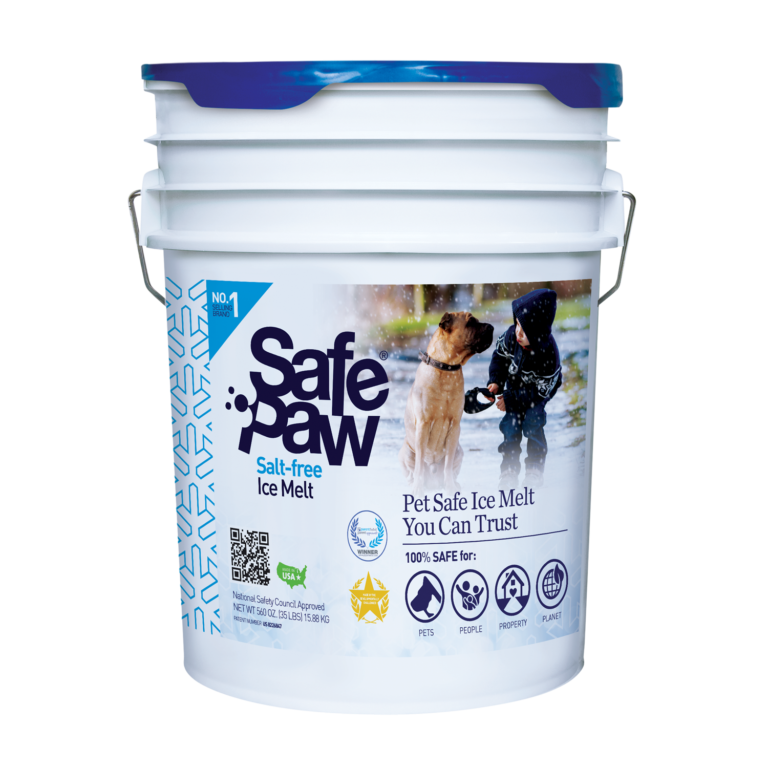
Safe Paw
It is a pet-friendly, eco-friendly ice melt that is safe for your family, pets, and property. It is made with a unique formula that is gentle on paws and concrete, and it melts ice and snow quickly and effectively.
Safe Paw is the perfect choice for winter weather!
Application Best Practices to Protect Concrete
Using a concrete-safe deicer properly is just as important as selecting the right product. Follow these best practices:
- Pre-Treat Surfaces: Apply deicer before snowfall to prevent ice from bonding to the concrete.
- Use the Right Amount: Avoid overapplication, which can lead to residue buildup and environmental harm. Follow manufacturer guidelines for dosage.
- Shovel First: Remove as much snow as possible before applying deicer to maximize its effectiveness.
- Spread Evenly: Use a spreader or similar tool to distribute the product uniformly, ensuring full coverage without excessive application.
Get ready for winter with Safe Paw: The Pet-Friendly Ice Melter that cares – for your home, pets, and planet.
Preventative Measures to Reduce Deicer Dependency
Incorporating preventative measures can minimize the need for chlorides deicers:
- Seal Concrete Surfaces: Applying a high-quality sealant can reduce porosity, preventing water and chlorides from penetrating the surface.
- Improve Drainage: Ensure proper drainage around your property to direct water away from concrete surfaces.
- Physical Snow Removal: Use tools like snow blowers, shovels, or roof rakes to manage snow before it has a chance to freeze.
Get ready for winter with Safe Paw: The Pet-Friendly Ice Melter that cares – for your home, pets, and planet.
Conclusion
Next time someone asks you about the safe salt for concrete, you know what to say. Choosing the right deicer for concrete is vital for protecting your surfaces and maintaining their longevity. Harsh salts may seem effective, but their long-term impact on concrete and the environment isn’t worth the risk. Products like Safe Paw offer a safer, eco-friendly alternative that delivers effective results without damaging your property. This winter, take proactive steps to keep your home safe while preserving the integrity of your concrete surfaces.
Try Our Other Winter Safety Products
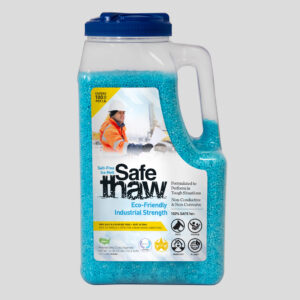
Safe Thaw
Safe Thaw was created as the ice management solution for tough winter environments. Ideal in commercial and industrial properties, shops, government agencies, bridges, construction. It’s 100% Salt-Free and Chloride-Free.
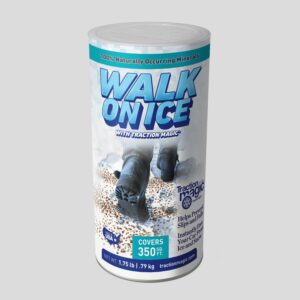
Walk On Ice
The slip and fall prevention solution, for any icy or snowy surface, on a handy portable package! Lightly spread around your walkway, driveway, vehicle, tires, and pathways. Turn ANY icy surface instantly, into a non-skid, slip-free surface.
